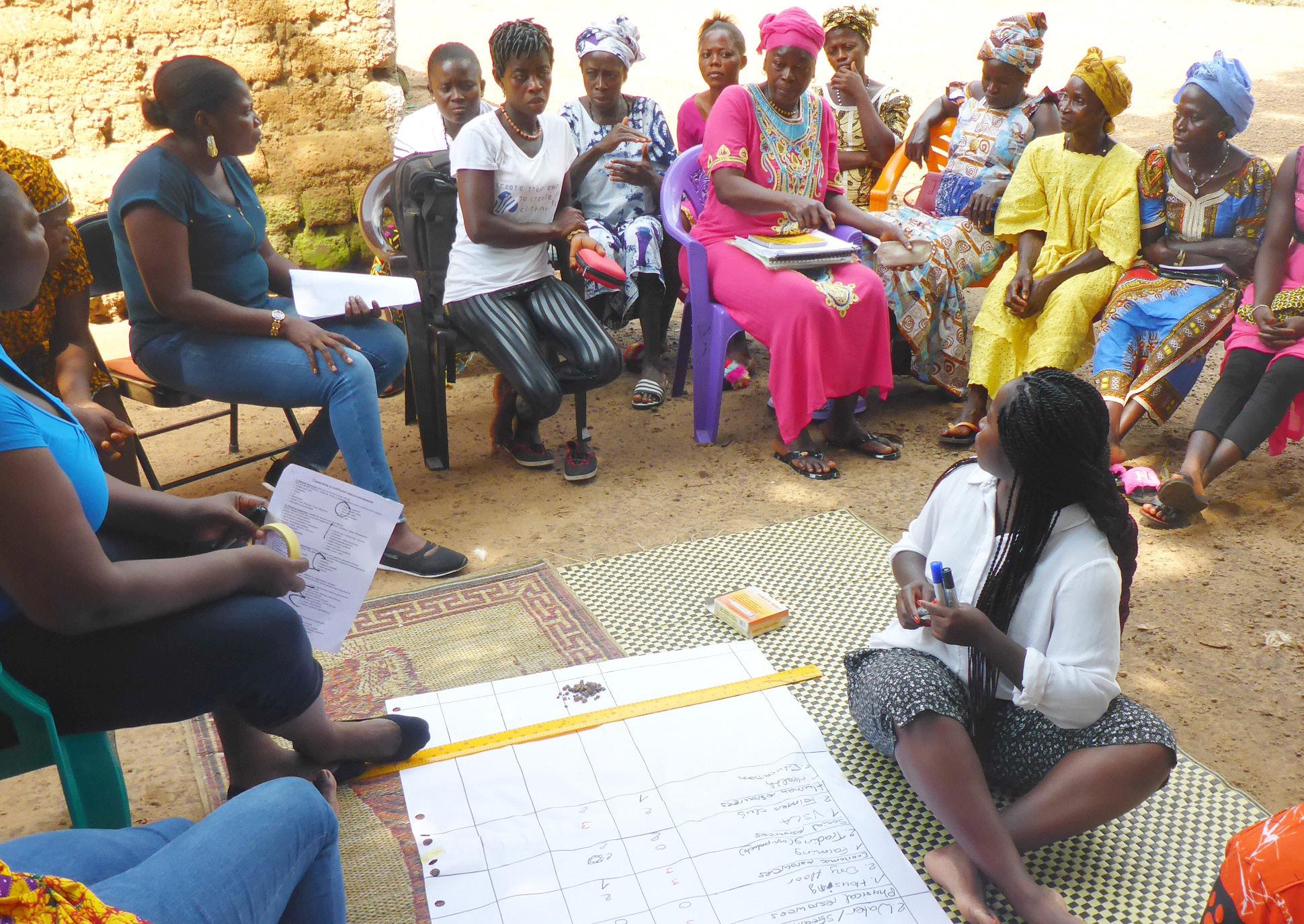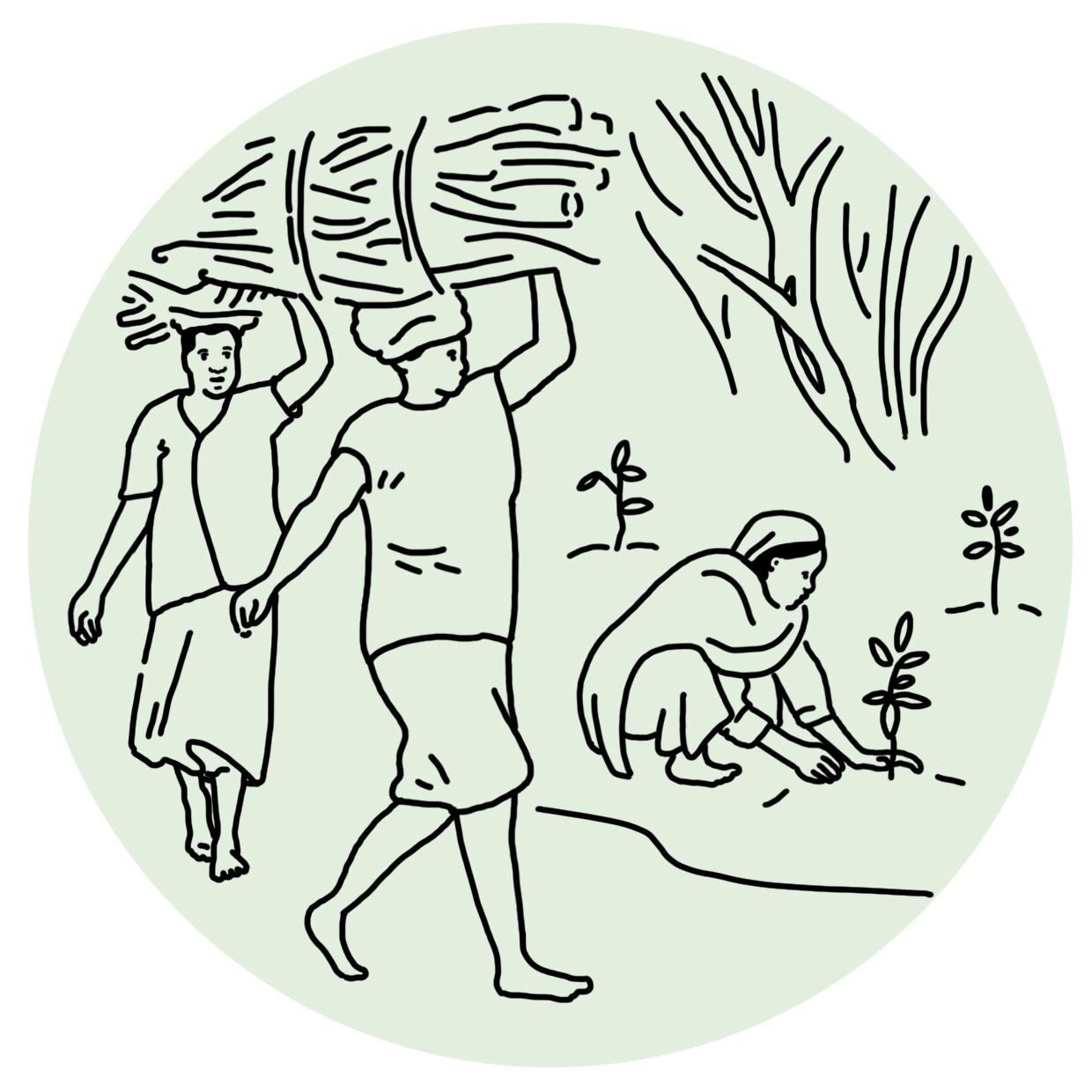
5 minute read
Exercise 4: Vulnerability matrix
A list of resources and assets in Annex IV provides a basis for discussion, but every community is different, and the list is intended only as a prompt.
In order to be manageable, the total number of identified resources or assets should not exceed 20. In this exercise, participants develop a matrix that lists the resources and assets most important to the community’s livelihoods against the hazards prioritized in Exercise 3. Participants then evaluate the level of impact of the hazards. The objectives of the exercise are to:
Identify the community’s most important resources and assets
Identify the vulnerability of the assets and resources to the hazards
Determine which assets and resources are most at risk
Determine which hazards are most harmful to the resources and assets
This exercise builds on the hazard map, the seasonal calendar and the prioritization of hazards from Module 2.
Facilitation
As in the hazard map and seasonal calendar exercises, facilitators provide pencils or markers in multiple colours and sheets of paper at least 80 cm x 100 cm in size. Facilitators prepare these sheets in advance in a matrix (see example below). Facilitators ask the participants to identify the main livelihood assets and resources in each of the categories listed below.
Natural resources on which people rely for income, food, medicine, protection, fuel and other sustenance – forests, water, air and soil, for example Physical resources – infrastructure for transport, water management, energy and communications such as roads, hospitals, dwellings and water tanks
Economic and financial resources such as income from the sale of agricultural products and handicrafts, casual work and remittances
Social resources such as local councils, churches, cooperatives, trade unions and family
Human resources – the skills, knowledge, capacity and good health important to the pursuit of livelihoods, including agricultural and leadership skills and gender-specific knowledge
Facilitators list the prioritized hazards from Exercise 3 horizontally across the top of the matrix. Participants then rate the impact of every hazard on the resources using the following scoring system:
3 = high impact on the resource 2 = medium impact on the resource 1 = low impact on the resource 0 = no or positive impact on the resource
The participants start with the first hazard and work vertically down the column. For each hazard, the participants decide on the degree of impact that each of the hazards has on each of the resources, and note the score in the appropriate box.
Facilitators will want to be aware of opinion leaders, quick responders, manipulation and domination, and to take enough time to discuss the score to find a consensus, especially at the beginning of the exercise.
Sample Blank vulnerability matrix
LIVELIHOOD RESOURCES AND ASSETS Hazard 1
PHYSICAL NATURAL
ECONOMIC FINANCIAL HUMAN SOCIAL Hazard 2 Hazard 3
When preparing the matrix, do not write “Total” or “Ranking” on the sheet. Instead, add these headings at the end of the exercise to create a moment of surprise when the totals and rankings are revealed. Sample Filled-in vulnerability matrix
PHYSICAL NATURAL
ECONOMIC FINANCIAL
HUMAN SOCIAL
Total
Ranking LIVELIHOOD RESOURCES AND ASSETS
Arable land Pasture Water Forest Houses Roads Wells Farming Livestock Petty trade Paid work Farmers association Women's Group Family Health Security Skills Drought
2 3 3 1 0 0 0 3 3 2 1 2 2 2 3 2 0 32

1 Changing rainfall patterns
1 1 1 0 0 0 0 3 2 2 0 1 1 1 2 1 0 16
3 Heavy winds
2 0 0 2 2 1 0 3 2 2 1 1 1 1 2 1 0 21
2 Total Ranking
6 4 4 3 2 1 0 9 7 6 2 4 4 4 7 4 0 3
1 2 3
2
The note takers document key points of discussion that lead to the assigned scores, and record any disagreements on the scores.
Facilitators add the numbers vertically and horizontally to determine which livelihood resources have the highest horizontal sum and are thus most vulnerable, and which hazard has the highest vertical sum and thus has the highest impact on the identified livelihood resources.
Discussion
When the participants have completed the vulnerability matrix, the facilitators bring together the female and male groups (and minorities if they have a separate session) into a single discussion of the results. The following questions can guide a discussion on the vulnerability matrix:
Where do the matrices of men and women agree, and where do they differ?
Which assets or resources are most affected, and which are not affected?
What does it mean to the community when the basic assets or resources of the most widespread livelihoods are affected the most?
Are any groups – the landless, handicapped people, the elderly, migrants or indigenous people – more affected than others?
Why are some hazards more harmful than others?
Where and how has the vulnerability of the community increased in recent years?
If particularly vulnerable groups are identified, write them down in a list, which will be used in Exercise 6.
Plan 45 minutes for preparation, 90 minutes for completing the matrix and 60 minutes for discussion.
Remember to document the results. Annex III has templates that may be helpful.
Add-on: Annex V includes a Participatory Vulnerability Assessment that provides for a systematic assessment of particularly vulnerable groups within a community.

Presentation of women’s vulnerability matrix, Democratic Republic of Congo Women’s group preparing vulnerability matrix, Sierra Leone

Module 4: Responses to the impacts of hazards
Survey and assessment of local responses taken to reduce vulnerability and enhance resilience

Module 4 reviews and evaluates the effectiveness and sustainability of local responses to the impacts resulting from current climate and disaster hazards, and summarizes and interprets the results.
As in Modules 2 and 3, facilitators conduct the exercise in separate groups of women and men, and if minorities are involved another separate session is also a good idea. A large part of the value of the exercises comes from the joint discussions that follow, and keeping all participants in the same venue allows for the joint session to follow the separate session without delay. The separate sessions may create logistical problems, and concurrent sessions, each with its own facilitator, may be an alternative way to handle the situation.









